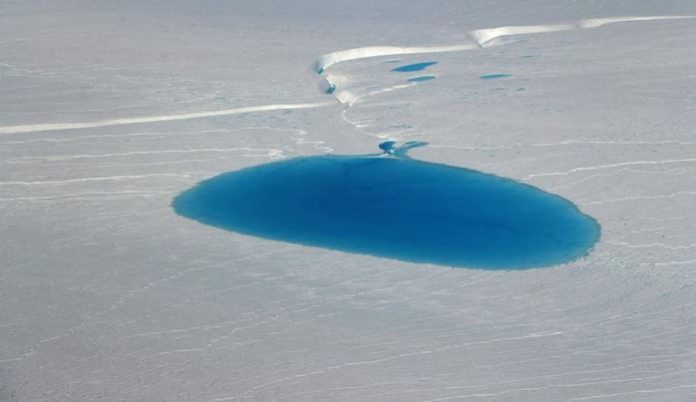
April 23 (UPI) — Greenland’s rate of ice loss has increased six-fold over the last few decades, according to a new study.
To calculate how much ice Greenland has lost since 1972, an international team of researchers compiled a variety of data sources, including elevation records, gravity readings, satellite images and more.
“Over the entire period, even though we have more and better data now than in the 1970s, we are able to construct a robust, comprehensive and very precise record of mass change,” Eric Rignot, researcher at the University of California, Irvine, told Earther.
The data showed that in the 1970s, Greenland’s ice sheet was fairly stable. The ice sheet regularly lost ice in the form of icebergs, but gained most or more of it back through snow accumulation. But beginning in the 1980s, the island’s ice sheet began shedding mass at an accelerated clip.
As the newest analysis revealed, the island’s coastal glaciers began flowing toward the ocean at a faster pace. And as calving rates have picked up, more and more ice is drifting out to sea. Warmer temperatures over the last 20 years have also led to increased melt water flows.
Since 1972, Greenland’s ice loss has contributed to nearly 14 millimeters of sea level rise, half of which has occurred during the last eight years.
“As glaciers will continue to speed up and ice [and] snow melt from the top, we can foresee a continuous increase in the rate of mass loss, and a contribution to sea level rise that will continue to increase more rapidly every year,” Rignot told CNN.
Rignot and his research partners determined that in the 1990s Greenland lost 41 billion tons of ice per year. In the 2000s, the island lost 187 billion tons per year. Between 2010 and 2018, Greenland lost 286 billion tons of ice each year.
The new compilation of Greenland ice loss data — published this week in the journal PNAS — showed all parts of Greenland are now melting and shedding ice.
“The entire periphery of Greenland is affected,” Pignot told the Washington Post. “I am particularly concerned about the northern regions, which host the largest amount of potential sea-level rise and are already changing fast.”
Significant levels of glacial melting — and resulting sea level rise — is already baked into the system, but researchers suggest catastrophic sea level rise could be avoided if humans act quickly to stop global warming.





